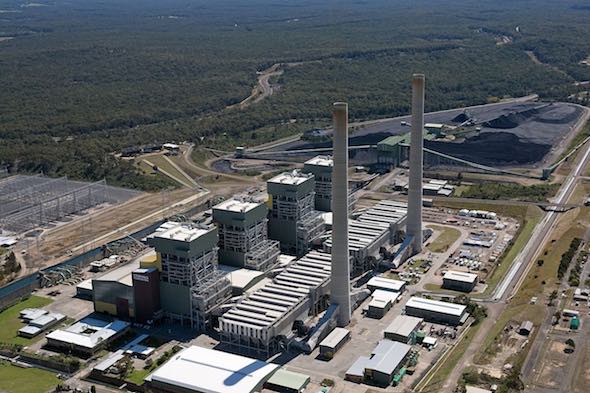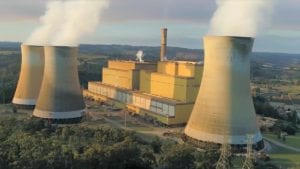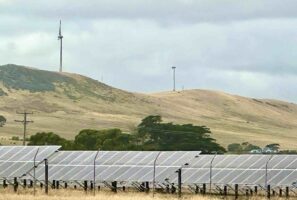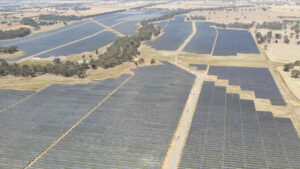The future of the Australia’s biggest coal plant remains a hot topic in the final days of the New South Wales election campaign, with Labor ‘not ruling out’ a government buy-back of the 2.8GW Eraring facility and the Coalition ‘not ruling out’ stepping in to extend its operating life.
NSW Labor eader Chris Minns, who remains the favourite to win the state election on Saturday, earlier this month flagged the possibility of buying up the black coal plant from its owner Origin Energy to keep it running beyond its planned closure date of August, 2025.
“I’m not going to negotiate with the private company from opposition, but I’m not going to take [buying it] off the table. People need to know that before the election,” Minns told 2GB at the time; a sentiment he reportedly reinforced on Thursday, also to 2GB.
Coalition leader Dominic Perrottet was on Thursday grilled about his own feelings about Eraring, leading to this exchange, packaged up by 2GB under the headline “LAST MINUTE BACKFLIP: Dom Perrottet changes tune on coal:”
Ben Fordham: Are you open to extending the life of Eraring?
Dominic Perrottet: [I’m] open to all those options, Ben…
Ben Fordham: Is that a yes?
Dominic Perrottet: … Yes, but …
Thecomments come amid speculation that Origin may delay the closure of at least one of Eraring’s four units, and fossil fuelled hysteria around the findings of a recent market operator report into future electricity reliability levels.
Origin announced in February of 2022 that it was bringing forward the planned closure of Eraring by seven years to 2025, a decision CEO Frank Calabria said reflected “the continuing, rapid transition of the NEM as we move to cleaner sources of energy.”
“The reality is the economics of coal-fired power stations are being put under increasing, unsustainable pressure by cleaner and lower-cost generation, including solar, wind and batteries,” Calabria said while also announcing plans to install a big battery at the Eraring site.
NSW energy minister Matt Kean responded to the news of Eraring’s early closure by suggesting it was no great surprise to his government and assuring voters that the state would continue to enjoy reliable and affordable electricity without the ageing coal plant, particularly with the help of big batteries.
“Origin raised the possibility of this closure a number of months ago and, with advice from the Australian Energy Market Operator (AEMO), we have developed a comprehensive plan to ensure that NSW has reliable and affordable electricity,” Kean said.
The NSW Coalition infrastructure roadmap, the brainchild of Matt Kean, is the most detailed and well thought out plan for the transition from coal to renewables ever seen in Australia, but as RenewEconomy editor Giles Parkinson wrote here, NSW Labor can’t bring itself to say that.
And while Minns’ suggestion that Labor could buy Eraring – along with the huge economic liabilities old coal assets carry – looks foolish and backwards, Perrottet’s failure to back in his party’s good work on planning for a renewable energy future looks cowardly.
Origin, meanwhile, which is still the actual owner of the plant, remains silent on the matter.
A spokesperson from the company simply stressed to RenewEconomy that the gen-tailer has made no changes to its decision to close Eraring in 2025, just as there have been no material changes to the market conditions that informed that decision. “We will continue to assess the market over time,” was the message.
As Origin itself has said, coal plants like Eraring are becoming less and less suitable for increasingly renewable grids, due to their lack of flexibility and their lack of reliability as they get older and more strained by a rapidly transitioning market. They are also becoming prohibitively expensive to run, due to the rising cost of coal and maintenance.
As if to prove that point, last February, not long after Origin announced the plant’s early closure, Eraring tripped suddenly, taking 649MW of capacity off the market. As RenewEconomy reported, the lights stayed on because other units, including batteries, responded to keep the frequency stable.
Just a year earlier, in May of 2021, Calabria had warned that the profitability of the coal plant was being eroded by higher levels of solar generation during the day, and its own inflexibility to quickly adjust output meant it was becoming unviable.
Calabria also told shareholders that the market should be prepared for a “messy” future for coal generators. Does NSW Labor really want to buy into that?










